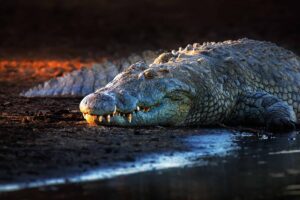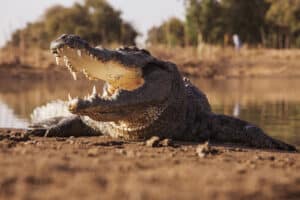As a tour guide, you never know what you are going to come across! It is difficult to imagine a tour guide being surprised by something they see while on their tour. However, that’s the beauty of nature and the wild animal kingdom. There is always something new to see and something new to experience. And we see this happening for this tour guide in the video below.
Check Out the Amazing Video Below!
Saltwater Crocodile Sighting in Australia
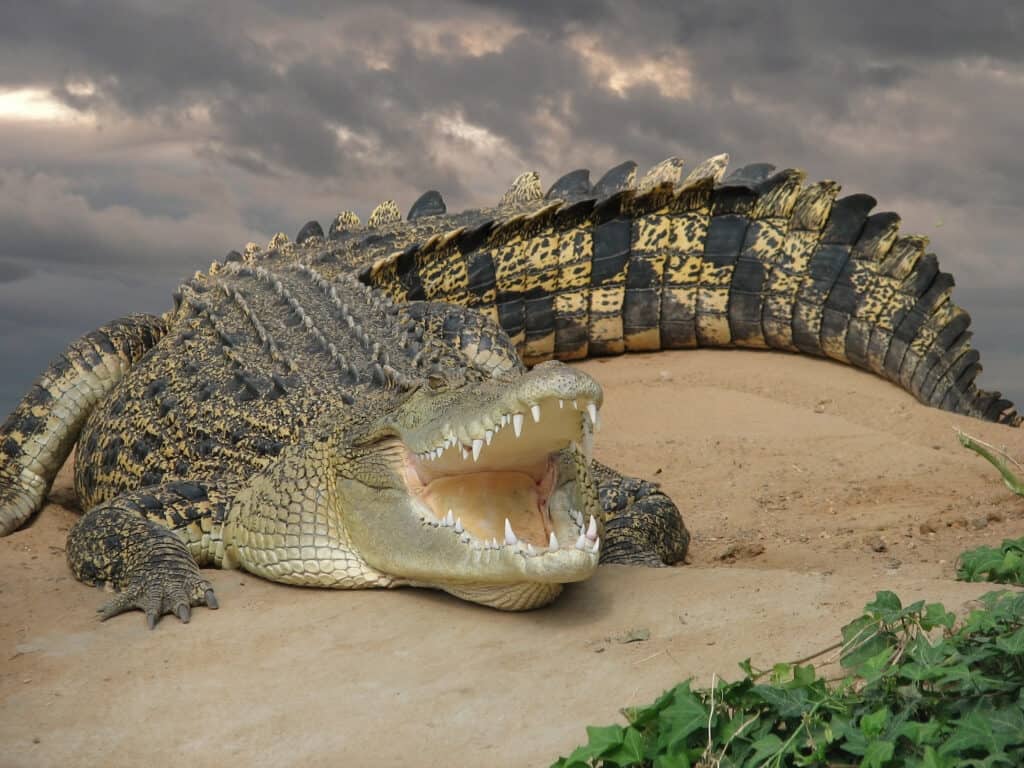
Saltwater crocodiles can swim up to 18 miles per hour.
©Susan Flashman/Shutterstock.com
This next Instagram video posted at the bottom of this blog post takes us to Australia. Specifically to Queensland, Australia, at the Mary River. This Instagram video was filmed and shared by the page Wild Man Adventures. Damian Duffy is a wildlife expert and tour guide in Kaurna Country, Southern Australia. He offers his remarks of what he experienced below!
“Today we witnessed multiple large crocodiles decimating a massive bull on the Mary River. The Mary River is located East/southeast of Darwin in the Top End of the Northern Territory and has the highest density of Saltwater Crocodiles on the entire planet.. around 15-20 ADULT Saltwater Crocodiles per kilometer. In the true Australia Scientific Description, that’s a Shitload of Crocodiles.”
Saltwater Crocodile Vs. Bull
At the start of this video, we are on the Mary River in Australia. And Duffy stopped as he came across an absolute monster of a crocodile flailing around. Only he wasn’t flailing. This crocodile was decimating an enormous bull in the water! Drowning their prey is a very common way for crocodiles to kill. Specifically, it is called the death roll.
How Many Saltwater Crocodiles Are in Australia?
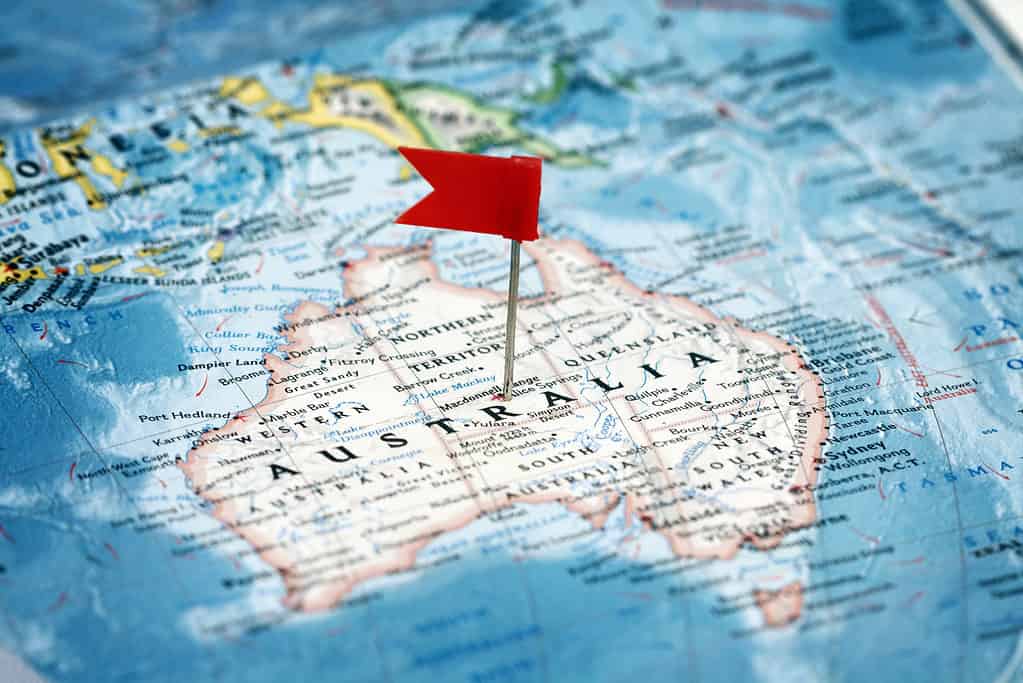
Australia is approximately 2.30 million square miles.
©iStock.com/AlexKosev
It’s important to note that there are saltwater crocodiles and freshwater crocodiles. What is the difference between them? Well, according to the Australian Parks, “Freshwater crocs have a narrow snout and a single row of four large scutes (bony plates) right behind their head. Salties have a broader snout and no scutes.” In addition to the differences in their snouts, there are also significant differences in their appearance.
The Australian Parks goes on to say that freshwater crocodiles can measure up to three meters (9.8 feet) in length. Whereas the saltwater crocodile can grow to double that length at six meters (19.7 feet) in length.
The population of crocodiles in the world is largely dependent on their species. While the species of crocodiles can depend on which research you look at, according to The Reptile Database, there are approximately 27 species recorded. And of these species, it is estimated there are 200,000 saltwater crocodiles in Australia alone. And the majority of them can be found in the Mary River, which is where this video posted below took place!
Is It Normal For Crocodiles to Eat Bulls?
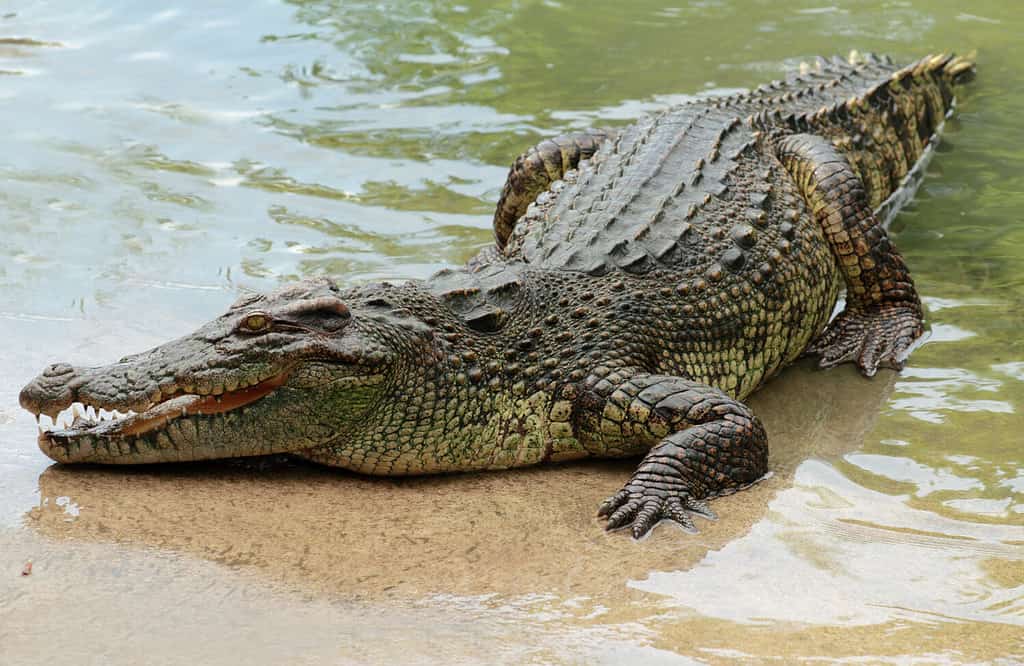
Crocodiles are known to eat bulls, and it is considered normal behavior.
©Naypong Studio/Shutterstock.com
Young crocodiles depend mainly on fish, crustaceans, small mammals, birds, and reptiles, but as they grow larger, they can pursue much larger prey species, including deer, zebra, and water buffalo. Crocodiles also kill cattle and often eat bulls.
The photo featured at the top of this post is © Willyam Bradberry/Shutterstock.com
Thank you for reading! Have some feedback for us? Contact the AZ Animals editorial team.





